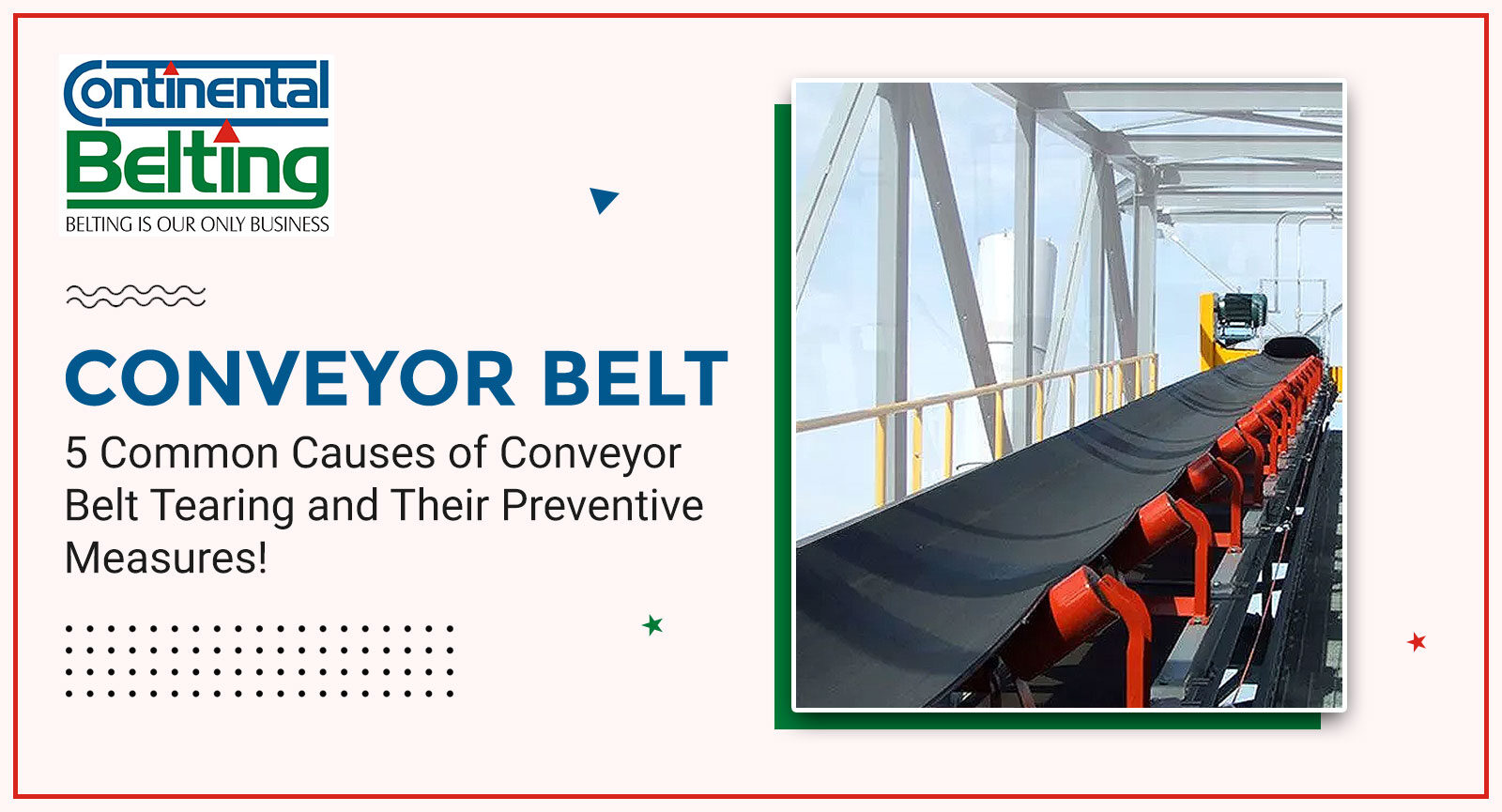Conveyor belt plays a crucial role in various industries, facilitating the seamless movement of goods and materials. However, they are not immune to wear and tear, and conveyor tearing is a common issue that can disrupt operations and lead to costly downtime.
In this article, we will explore five common causes of conveyor belt tearing and provide practical preventive measures to ensure smooth operations and extend the lifespan of your conveyor system.
What Are the Reasons for Conveyor Belt Tearing?
Conveyor belt tears usually fall into two categories: transverse and longitudinal.
- Transverse tears are typically caused by a break in the steel cord or EP fabric within the belt itself, often indicating a quality issue that’s tricky to address on-site.
- Longitudinal tears, on the other hand, occur when a hard object presses against the belt during operation. When the belt’s bearing capacity is exceeded, it can lead to a puncture, and if the belt continues to run, it stretches the hole, potentially cutting the entire belt.
Longitudinal tears are most common at the loading point towards the machine’s tail. This is often due to materials dropping from the discharge port that carry foreign objects with sharp edges. These foreign objects can easily pierce the belt. When they get wedged on the port, shelf, or conveyor idler, they exert continuous pressure, causing scratches that deepen rapidly. If detected in time, stopping the belt can mitigate losses. However, if not caught earlier, serious consequences can follow.
Here are the main reasons for tearing off a conveyor belt:
Impurities in the conveyed material:
This can lead to two scenarios. First, if the material contains foreign objects like sharp ores or metal fragments, they can cause localized damage and result in longitudinal tearing. Second, if large pieces of material get caught in the equipment, they can scratch and press against the belt, potentially leading to a tear.
Improper installation of auxiliary equipment:
Parts of the conveyor itself falling off during transport can also cause tearing. For instance, components like the vibrator lining plate, pulverizer’s hammerhead, or blanking port’s adjusting block, if detached, can lead to belt damage.
Design flaws in the conveyor’s structure:
If the design of the conveyor is flawed, particularly with a significant drop at the tail of the machine, the material’s high-speed impact on the lower belt can lead to tearing.
Material blocking:
Small transfer chutes can hinder material flow and potentially cause the conveyor belt to tear. If the belt is directly pressed against the bracket supporting the intermediate idler, the pressure can lead to tearing.
Conveyor parts failure:
If components like the end cap of the conveyor idler are not properly welded, they can act like a blade, cutting into the conveyor. Additionally, if the EP cloth or wire rope breaks, it may lead to core pulling and tearing.
To prevent conveyor belt tearing, consider the following measures:
Source control:
Enhance material control at the source, clean up bulky materials, and limit the hazard of foreign objects and bulky materials to the belt.
Regular inspections:
Increase the frequency of inspections to catch and address issues promptly.
Improve conveyor structure:
Reduce impact, lower material speed, and prevent impurities from getting caught in the conveyor belt by adjusting the blanking point drop, adding buffer baffles, and dealing with fine materials before bulk material.
Install a tearing detection device:
This device can quickly detect belt tears, issue an alarm signal, and stop the machine to minimize the length of the tear and reduce losses.
Use tear-resistant conveyor belts:
These belts have reinforced layers to withstand tearing.
Utilize belts with tearing detection:
These belts have sensors that can quickly identify tears and issue an alarm signal.
Implement management measures:
Strengthen material quality control, equipment management, and impurity removal control.
Additionally, focus on daily maintenance, buy high-quality belts from one of the best Conveyor Belt Suppliers in India and introduce computer management for belt tear detection records. Establish testing methods and systems for belts, and conduct thorough cost-benefit analyses for long-term solutions.
Conclusion
Conveyor belt tearing can lead to costly downtime and disruptions in your operations. By understanding and addressing the common causes, you can take proactive steps to prevent such issues from occurring.
Continental Belting Pvt Ltd manufactures specialized belt conveyors and conveyor systems for use in virtually every sector. Our dedicated team of professionals provides a comprehensive variety of conveyor services, including replacement parts, repairs, and inspections. So, if you’re looking for some trusted Conveyor Belt Manufacturers in India, contact us today.



